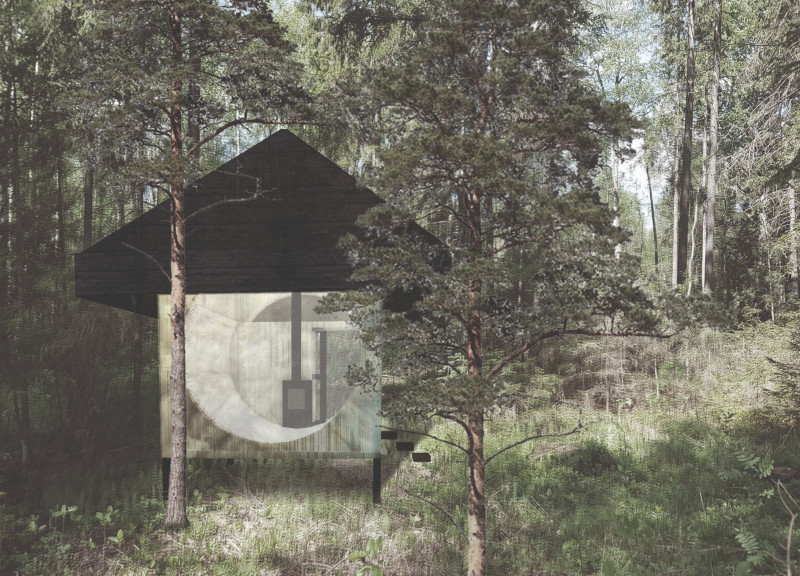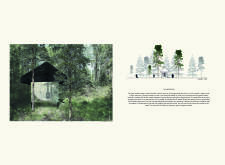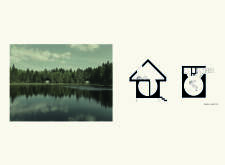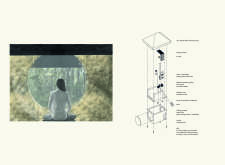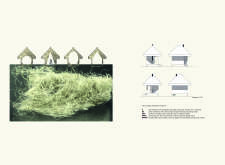5 key facts about this project
At first glance, the architecture of the cabin reflects a minimalist philosophy that prioritizes simplicity and serenity. The design relies heavily on local materials, prominently featuring flax insulation and Norway Spruce for structural elements. The use of flax, a renewable resource known for its thermal efficiency, not only aligns with the project's sustainability goals but also promotes a healthy indoor environment. Norway Spruce enhances the design by providing both aesthetic and structural qualities, ensuring durability while maintaining a connection to the local landscape.
The spatial layout of the meditation cabin is thoughtfully organized to enhance its meditative purpose. An open plan creates a seamless flow between areas, allowing for movement and interaction with the surrounding nature. Central to this configuration is the meditation room, purposefully designed for isolation and tranquility. This space is complemented by large round windows that frame the forest views, further emphasizing the connection with nature. A loft bed optimizes vertical space, maintaining the cabin's open feel while providing essential sleeping arrangements. Additionally, the incorporation of a kitchenette and utility space allows for basic functionality without detracting from the overall simplicity of the design.
Unique to this project is the innovative use of a bicycle generator, providing an engaging and practical means of generating electricity. This feature not only fosters self-sufficiency but also encourages a healthier lifestyle by integrating physical activity into the daily experience of the cabin. The forward-thinking design extends to the installation of a composting toilet, which minimizes water consumption and reflects a strong commitment to sustainable practices.
The aesthetic appeal of the cabin lies in its muted color palette, featuring dark exterior finishes that help it blend seamlessly into the surrounding environment. This choice allows the building to maintain a low profile within the forest while also highlighting the textures of the materials used. Internally, the soft textures of flax create a warm and inviting atmosphere, contributing to the overall feeling of comfort and peace that the cabin embodies.
What distinguishes this architectural project is its holistic approach to sustainability and functionality. By utilizing locally sourced, renewable materials and accommodating innovative systems, the cabin reflects a growing awareness of ecological responsibility within architectural design. Additionally, the emphasis on creating spaces that promote mental well-being and connection to nature aligns with contemporary wellness trends in architecture.
This forest meditation cabin stands as a testament to the possibilities of thoughtful architectural design that respects the environment and fosters human connection. For readers interested in gaining deeper insights into the architectural ideas that shaped this project, exploring the architectural plans, sections, and detailed designs will provide a comprehensive understanding of its unique attributes and design intentions. Delving into these resources will undoubtedly enhance one's appreciation of how architecture can harmonize with nature to support a meaningful human experience.


